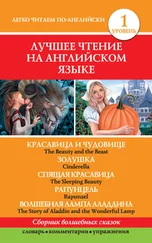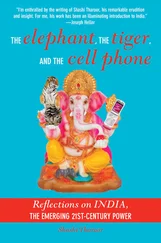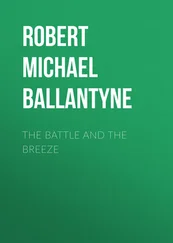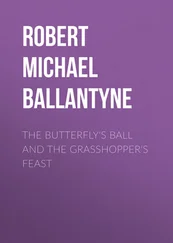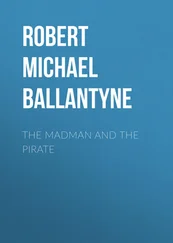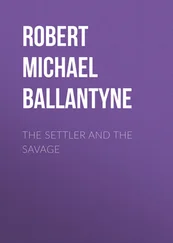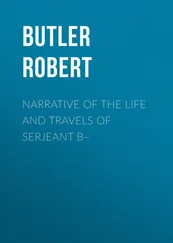Robert Vane Russell - The Tribes and Castes of the Central Provinces of India, Volume 1
Здесь есть возможность читать онлайн «Robert Vane Russell - The Tribes and Castes of the Central Provinces of India, Volume 1» — ознакомительный отрывок электронной книги совершенно бесплатно, а после прочтения отрывка купить полную версию. В некоторых случаях можно слушать аудио, скачать через торрент в формате fb2 и присутствует краткое содержание. Жанр: foreign_prose, История, foreign_edu, foreign_antique, на английском языке. Описание произведения, (предисловие) а так же отзывы посетителей доступны на портале библиотеки ЛибКат.
- Название:The Tribes and Castes of the Central Provinces of India, Volume 1
- Автор:
- Жанр:
- Год:неизвестен
- ISBN:нет данных
- Рейтинг книги:5 / 5. Голосов: 1
-
Избранное:Добавить в избранное
- Отзывы:
-
Ваша оценка:
- 100
- 1
- 2
- 3
- 4
- 5
The Tribes and Castes of the Central Provinces of India, Volume 1: краткое содержание, описание и аннотация
Предлагаем к чтению аннотацию, описание, краткое содержание или предисловие (зависит от того, что написал сам автор книги «The Tribes and Castes of the Central Provinces of India, Volume 1»). Если вы не нашли необходимую информацию о книге — напишите в комментариях, мы постараемся отыскать её.
The Tribes and Castes of the Central Provinces of India, Volume 1 — читать онлайн ознакомительный отрывок
Ниже представлен текст книги, разбитый по страницам. Система сохранения места последней прочитанной страницы, позволяет с удобством читать онлайн бесплатно книгу «The Tribes and Castes of the Central Provinces of India, Volume 1», без необходимости каждый раз заново искать на чём Вы остановились. Поставьте закладку, и сможете в любой момент перейти на страницу, на которой закончили чтение.
Интервал:
Закладка:
R. V. Russell
The Tribes and Castes of the Central Provinces of India, Volume 1
Political Divisions of the Indian Empire
Scale = 1 : 17,500,000
Central Provinces and Berar
Scale = 1 : 4,000,000 or 63.1 Miles to an Inch
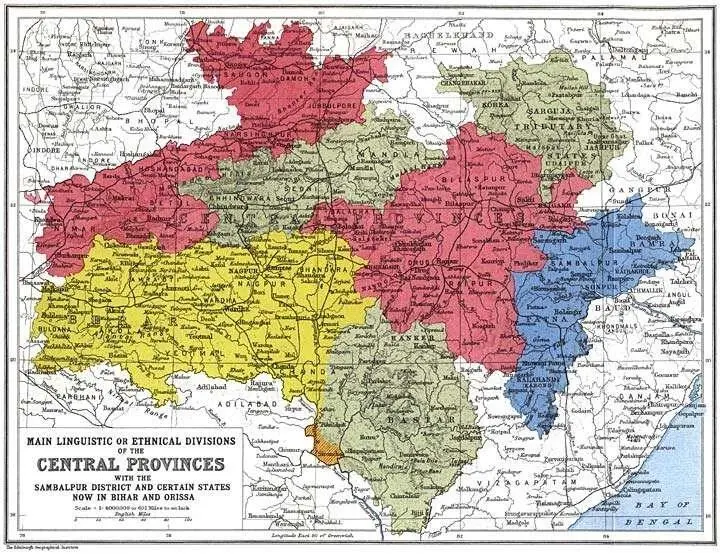
Main Linguistic or Ethnical Divisions of the Central Provinces with the Sambalpur District and Certain States now in Bihar and Orissa
Scale = 1 : 4,000,000 or 63.1 Miles to an Inch
HINDI-speaking Districts.—The western tract includes the Saugor, Damoh, Jubbulpore, Narsinghpur, Hoshangabad, Nimar and Betul Districts which lie principally in the Nerbudda Valley or on the Vindhyan Hills north-west of the Valley. In most of this area the language is the Bundeli dialect of Western Hindi, and in Nimar and Betul a form of the Rajputana dialects. The eastern tract includes the Raipur, Bilaspur and Drug Districts and adjacent Feudatory States. This country is known as Chhattisgarh, and the language is the Chhattisgarhi dialect of Eastern Hindi.

MARATHI.—Amraoti, Akola, Buldana and Yeotmal Districts of Berar, and Nagpur, Bhandara, Wardha and Chanda Districts of the Nagpur Plain.

TELUGU.—Sironcha tahsil of Chanda District. Telugu is also spoken to some extent in the adjacent tracts of Chanda and Bastar States.

TRIBAL or Non-Aryan dialects.—Mandla, Seoni, Chhindwara, and part of Balaghat Districts on the Satpura Range in the centre. Sarguja, Jashpur, Udaipur, Korea, and Chang Bhakar States on the Chota Nagpur plateau to the north-east. Bastar and Kanker States and parts of Chanda and Drug Districts on the hill-ranges south of the Mahanadi Valley to the south-east. In these areas the non-Aryan or Kolarian and Dravidian tribes form the strongest element in the population but many of them have abandoned their own languages and speak Aryan vernaculars.
URIYA.—Sambalpur District and Sarangarh, Bamra, Rairakhol, Sonpur, Patna and Kalahandi Feudatory States. This area, with the exception of Sarangarh, no longer forms part of the Central Provinces, having been transferred to Bengal in 1905, and subsequently to the new Province of Bihar and Orissa. It was, however, included in the ethnographic survey for some years, and is often referred to in the text.
Preface
This book is the result of the arrangement made by the Government of India, on the suggestion of the late Sir Herbert Risley, for the preparation of an ethnological account dealing with the inhabitants of each of the principal Provinces of India. The work for the Central Provinces was entrusted to the author, and its preparation, undertaken in addition to ordinary official duties, has been spread over a number of years. The prescribed plan was that a separate account should be written of each of the principal tribes and castes, according to the method adopted in Sir Herbert Risley’s Tribes and Castes of Bengal . This was considered to be desirable as the book is intended primarily as a work of reference for the officers of Government, who may desire to know something of the customs of the people among whom their work lies. It has the disadvantage of involving a large amount of repetition of the same or very similar statements about different castes, and the result is likely therefore to be somewhat distasteful to the ordinary reader. On the other hand, there is no doubt that this method of treatment, if conscientiously followed out, will produce more exhaustive results than a general account. Similar works for some other Provinces have already appeared, as Mr. W. Crooke’s Castes and Tribes of the North-Western Provinces and Oudh , Mr. Edgar Thurston’s Castes and Tribes of Southern India , and Mr. Ananta Krishna Iyer’s volumes on Cochin, while a Glossary for the Punjab by Mr. H.A. Rose has been partly published. The articles on Religions and Sects were not in the original scheme of the work, but have been subsequently added as being necessary to render it a complete ethnological account of the population. In several instances the adherents of the religion or sect are found only in very small numbers in the Province, and the articles have been compiled from standard works.
In the preparation of the book much use has necessarily been made of the standard ethnological accounts of other parts of India, especially Colonel Tod’s Annals and Antiquities of Rājasthān , Mr. J.D. Forbes’ Rasmāla or Annals of Gujarāt , Colonel Dalton’s Ethnology of Bengal , Dr. Buchanan’s Eastern India , Sir Denzil Ibbetson’s Punjab Census Report for 1881, Sir John Malcolm’s Memoir of Central India , Sir Edward Gait’s Bengal and India Census Reports and article on Caste in Dr. Hastings’ Encyclopaedia of Religion and Ethics , Colonel (Sir William) Sleeman’s Report on the Badhaks and Rāmāseeāna or Vocabulary of the Thugs, Mr. Kennedy’s Criminal Classes of the Bombay Presidency , Major Gunthorpe’s Criminal Tribes of Bombay, Berār and the Central Provinces , the books of Mr. Crooke and Sir H. Risley already mentioned, and the mass of valuable ethnological material contained in the Bombay Gazetteer (Sir J. Campbell), especially the admirable volumes on Hindus of Gujarāt by Mr. Bhimbhai Kirpārām, and Pārsis and Muhammadans of Gujarāt by Khān Bahādur Fazlullah Lutfullah Faridi, and Mr. Kharsedji Nasarvānji Seervai, J.P., and Khān Bahādur Bāmanji Behrāmji Patel. Other Indian ethnological works from which I have made quotations are Dr. Wilson’s Indian Caste ( Times Press and Messrs. Blackwood). Bishop Westcott’s Kabīr and the Kabīrpanth (Baptist Mission Press, Cawnpore), Mr. Rajendra Lāl Mitra’s Indo-Aryans (Newman & Co., Calcutta), The Jainas by Dr. J.G. Bühler and Mr. J. Burgess, Dr. J.N. Bhattachārya’s Hindu Castes and Sects (Thacker, Spink & Co., Calcutta), Professor Oman’s Mystics, Ascetics and Saints of India, Cults, Customs and Superstitions of India , and Brāhmans, Theists and Muslims of India (T. Fisher Unwin), Mr. V.A. Smith’s Early History of India (Clarendon Press), the Rev. T.P. Hughes’ Dictionary of Islām (W.H. Allen & Co., and Heffer & Sons, Cambridge), Mr. L.D. Barnett’s Antiquities of India , M. André Chevrillon’s Romantic India , Mr. V. Ball’s Jungle Life in India , Mr. W. Crooke’s Popular Religion and Folklore of Northern India , and Things Indian , Captain Forsyth’s Highlands of Central India (Messrs. Chapman & Hall), Messrs. Yule and Burnell’s Hobson-Jobson (Mr. Crooke’s edition), Professor Hopkins’ Religions of India , the Rev. E.M. Gordon’s Indian Folk-Tales (Elliot & Stock), Messrs. Sewell and Dikshit’s Indian Calendar , Mr. Brennand’s Hindu Astronomy , and the late Rev. Father P. Dehon’s monograph on the Oraons in the Memoirs of the Asiatic Society of Bengal .
Ethnological works on the people of the Central Provinces are not numerous; among those from which assistance has been obtained are Sir C. Grant’s Central Provinces Gazetteer of 1871, Rev. Stephen Hislop’s Notes on the Aboriginal Tribes of the Central Provinces , Colonel Bloomfield’s Notes on the Baigas , Sir Charles Elliott’s Hoshangābād Settlement Report , Sir Reginald Craddock’s Nāgpur Settlement Report , Colonel Ward’s Mandla Settlement Report , Colonel Lucie Smith’s Chānda Settlement Report , Mr. G.W. Gayer’s Lectures on Criminal Tribes , Mr. C.W. Montgomerie’s Chhindwāra Settlement Report , Mr. C.E. Low’s Bālāghāt District Gazetteer , Mr. E.J. Kitts’ Berār Census Report of 1881, and the Central Provinces Census Reports of Mr. T. Drysdale, Sir Benjamin Robertson and Mr. J.T. Marten.
Читать дальшеИнтервал:
Закладка:
Похожие книги на «The Tribes and Castes of the Central Provinces of India, Volume 1»
Представляем Вашему вниманию похожие книги на «The Tribes and Castes of the Central Provinces of India, Volume 1» списком для выбора. Мы отобрали схожую по названию и смыслу литературу в надежде предоставить читателям больше вариантов отыскать новые, интересные, ещё непрочитанные произведения.
Обсуждение, отзывы о книге «The Tribes and Castes of the Central Provinces of India, Volume 1» и просто собственные мнения читателей. Оставьте ваши комментарии, напишите, что Вы думаете о произведении, его смысле или главных героях. Укажите что конкретно понравилось, а что нет, и почему Вы так считаете.

